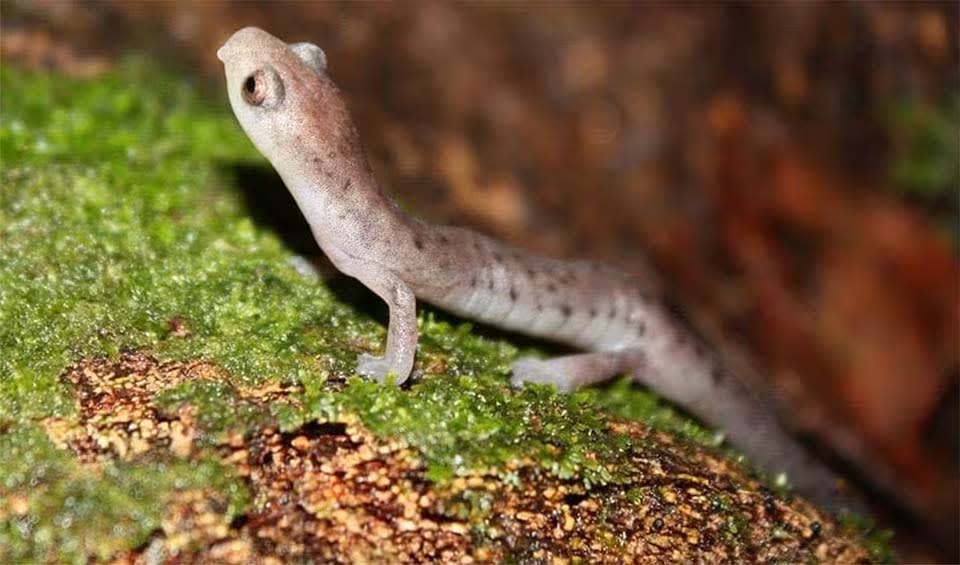Alvarado’s salamander is a relatively small but highly specialized amphibian with a slender, elongated body covered in smooth, moist skin, essential for cutaneous respiration—a characteristic trait of many amphibians. The salamander’s skin coloration is predominantly dark brown or black, interspersed with lighter markings that create a stunning mosaic, providing effective camouflage against the forest floor’s dappled light.
A distinctive feature of this salamander is its webbed feet. These adaptations are not merely ornamental but serve a crucial functional purpose. The webbing between their toes allows for enhanced grip and agility, enabling the salamander to climb and cling to various surfaces in its arboreal and semi-arboreal habitat. This climbing ability is a remarkable adaptation that allows the salamander to exploit a wide range of ecological niches.
Alvarado’s salamander is endemic to Central America, with its range primarily extending across the biodiverse regions of Costa Rica and Panama. These countries are renowned for their rich tropical and subtropical moist forests, which provide the perfect environment for this species. They can thrive in humid environments with abundant cover and moisture, which is crucial for their survival and reproductive activities. The specificity of its habitat requirements underscores the importance of preserving these unique ecosystems.
The salamander’s behavior is characterized by its climbing prowess. Thanks to its webbed feet, Alvarado’s salamander can effortlessly navigate vertical surfaces, making it adept at climbing trees, shrubs, and rocks. This arboreal lifestyle not only allows it to escape ground-dwelling predators but also to access a diverse array of food sources.
Distribution
 Costa Rica
Costa RicaAnything we've missed?
Help us improve this page by suggesting edits. Glory never dies!
Suggest an editGet to know me
Terrestrial / Aquatic
Altricial / Precocial
Polygamous / Monogamous
Dimorphic (size) / Monomorphic
Active: Diurnal / Nocturnal
Social behavior: Solitary / Pack / Herd
Diet: Carnivore / Herbivore / Omnivore / Piscivorous / Insectivore
Migratory: Yes / No
Domesticated: Yes / No
Dangerous: Yes / No




